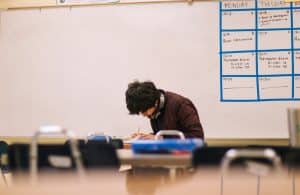Flipped Classrooms: Changing How Students Learn
When it comes to traditional classroom learning, students are often taught through lectures and activities that are primarily led by the teacher. However, with the introduction of flipped classrooms, the way students learn is starting to shift. Flipped classrooms are a relatively new teaching method that is changing the education landscape. In this article, we will explore what flipped classrooms are and how they are changing the way students learn.
The Basics of Flipped Classrooms
In a traditional classroom setting, students attend class, listen to lectures, and complete assignments during class time. This leaves little room for individualized instruction or discussion. Flipped classrooms, on the other hand, flip this traditional model on its head. In a flipped classroom, students watch pre-recorded lectures at home and then use class time for more interactive activities, such as discussions, group work, and hands-on projects. This allows for a more personalized and engaging learning experience for students.
The Benefits of Flipped Classrooms
One of the primary benefits of flipped classrooms is that it allows for more individualized instruction. With pre-recorded lectures, students can pause, rewind and replay as needed, allowing them to learn at their own pace. This also gives students the opportunity to review material that they may have missed or did not understand during class time.
Additionally, flipped classrooms promote active learning. With less time spent on lectures, students have more time to engage in discussions and hands-on activities. This type of active learning has been shown to increase student engagement and motivation, leading to better learning outcomes.
The Impact on Student Learning
Despite the benefits, some may question whether flipped classrooms actually improve student learning. However, research has shown that flipped classrooms can lead to better academic performance. A study conducted by Arizona State University found that students in a flipped mathematics classroom scored an average of seven percentage points higher on exams compared to students in a traditional classroom setting.
Furthermore, flipped classrooms have been found to improve critical thinking skills. With more time for discussion and interactive activities, students are encouraged to think critically about the material they are learning. This type of deep learning is crucial for success in the real world.
Challenges and Solutions
While flipped classrooms have many benefits, there are also challenges that educators may face when implementing this teaching method. One common challenge is ensuring that students watch the pre-recorded lectures before coming to class. This can be addressed by holding students accountable through quizzes or assignments based on the lecture material.
Another challenge is access to technology. In order for flipped classrooms to be successful, students must have access to a device to watch the pre-recorded lectures. To address this, some schools have implemented a “flipped classroom lab” where students can watch lectures before the start of the school day or during a study hall period.
Is Flipped Learning Right for Your Classroom?
Flipped classrooms can be a valuable tool for teachers and students, but it is not a one-size-fits-all approach. Consider the type of material you are teaching and the needs of your students before implementing this teaching method. Additionally, it is important to provide support for students who may struggle with self-paced learning, and to continuously evaluate and adjust the flipped classroom model to fit the needs of your students.
In conclusion, flipped classrooms are changing the way students learn by promoting active learning, individualized instruction, and critical thinking. While there may be challenges to overcome, the benefits of this teaching method are evident. As technology continues to advance and the education landscape evolves, we can expect to see more and more flipped classrooms in the future.






